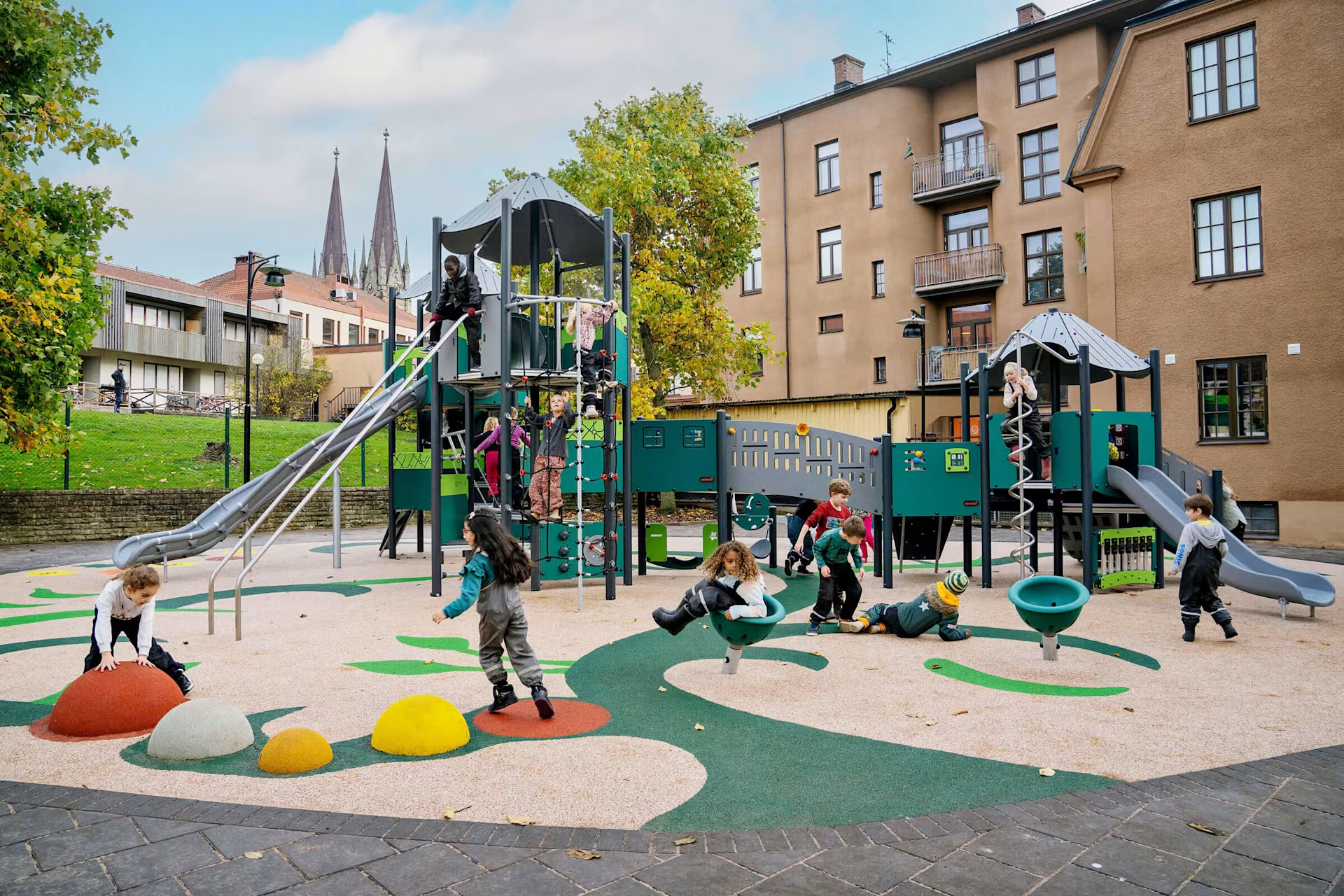Landscape playground ideas and inspiration
Playground Landscaping and Design

Why is Landscape Design Important When Designing Playgrounds?
Landscape design thoughtfully integrates natural elements like trees, plants, rocks, and water features into playgrounds. This not only makes the space more visually appealing but also encourages children to engage with nature. Landscape design is essential in playground development beyond simply placing play equipment in an open area. It makes a cohesive, engaging, and multifunctional space that supports children's physical, emotional, and social development and contributes to the nearby community.

The Art of Blending Play Spaces with Nature
Imagine a playground that feels more like a journey through a natural landscape than a collection of play equipment. This is the art of landscape architecture, where landscape architects strive to blend play spaces perfectly with nature to create an environment where imagination runs free by using materials and landscape design that harmonize with the surroundings.
The driving force behind this approach is to be , which takes into account the materials used and the preservation of the local ecosystem and community character.

The Role of Natural Elements in Playground Landscape Design
Playground landscape design involves thoughtfully integrating play areas with natural surroundings, aiming to create spaces that are both functional and inspiring. Research shows that natural environments stimulate creativity, imagination, and cognitive development. By interacting with natural elements, children can explore, discover, and learn in ways that traditional playgrounds may not offer.
By incorporating natural elements and using the surrounding landscape, children will get both the joy of a well-built playground and the sensory experiences that the surrounding habitat offers, creating a varied and engaging play-adventure.

Incorporating Topography into Playground Layout
A well-designed playground incorporates diverse terrain and varied play structures that challenge children physically. Hills, slopes, climbing structures, and different textures underfoot help develop motor skills, balance, and coordination. These elements encourage active play, which is important for building strength and endurance.
The land itself can be used to shape play areas. , such as embankment slides or structures, can be placed creatively to fit the existing landscape.

Ensuring Smooth Navigation for Diverse Users
Every child should find it easy to navigate a playground, irrespective of their abilities. Accessible pathways and thoughtfully planned layouts allow for smooth transitions and easy access, letting the focus remain on the joy of play.
such as poured-in-place rubber support mobility devices, ensuring that the playground is a welcoming space for all.

Innovative Materials for Lasting Fun
The principles of durability anchor modern playground design. Communities are increasingly seeking materials that withstand the test of time and the elements, ensuring that playgrounds remain a source of fun for years to come.
Quality equipment designed for longevity enriches the play experience and is a wise investment for the future. Whether you choose or traditional ones, all playground equipment from KOMPAN can be customised to fit your surrounding landscape.

Enhancing Urban Spaces with Creative Playgrounds
Innovative playgrounds revitalise urban spaces, converting them into community, creativity, and play hotspots. The transformation of urban areas into vibrant spaces that invite gathering and interaction is a testament to the power of innovative playground design. These spaces often feature park benches and other welcoming elements that enhance the atmosphere.
By incorporating diverse elements that cater to all ages, these playgrounds become more than just a play space – they are a pulse point of the community.
Get inspired by how others have done it
Frequently Asked Questions
A playground is inclusive when it is designed to be accessible and enjoyable for children of all abilities. Its equipment encourages interaction and play among all kids, and pathways allow for easy navigation by those with disabilities.
Natural elements like trees, rocks, and water features enhance a playground's design by providing sensory stimulation for children through tactile, visual, and auditory experiences.
Absolutely, playgrounds can have a positive impact on the local economy by attracting families, increasing foot traffic to local businesses, and boosting property values in the surrounding area.
Community involvement in playground design ensures that the playgrounds meet local needs, foster a sense of ownership, and promote sustained care and use of the play areas. This leads to a more effective and well-utilized playground.
Get help with playground landscaping
Please fill in your contact details and we will get back to you as soon as possible.











